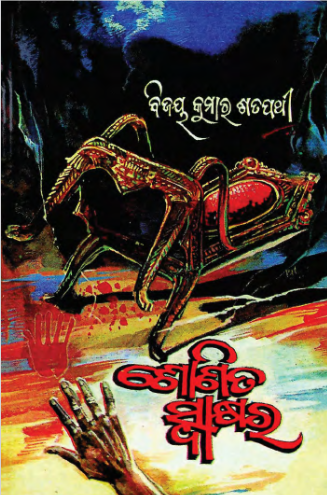Sonita Swakshara, penned by the prolific Odia playwright Bijay Kumar Satapathy, is a notable contribution to the realm of Odia drama, published in 2001. This work reflects the complexities of human relationships and the societal dilemmas that resonate within rural and urban landscapes of Odisha. The title translates to “Sonita’s Literacy,” which serves as both a literal and metaphorical exploration of the themes related to education, empowerment, and female agency in a rapidly changing world.
The narrative unfolds around the protagonist, Sonita, a young girl whose life is emblematic of the struggles faced by women in traditional settings. Right from the start, Sonita is portrayed as a symbol of hope and aspiration. The story emphasizes her quest for knowledge amidst societal constraints and gender biases. As Sonita battles the obstacles imposed by a patriarchal society, her journey becomes a powerful commentary on the transformative potential of literacy and education for women.
The plot intricately weaves various sub-dramas, portraying the myriad challenges that Sonita encounters. These include her family dynamics, societal expectations, and personal aspirations. Every character in the drama serves as a reflection of contrasting viewpoints regarding education—some supporting Sonita’s dreams while others remain entrenched in tradition, fearing the social ramifications of a literate woman. Through dramatic dialogues and conflicts, Satapathy explores the dichotomy of modernity and tradition, allowing the audience to witness the characters’ internal struggles.
Sonita is portrayed as a multi-dimensional character—innocent yet resolute. Her passion for learning and relentless spirit to overcome ignorance and oppression make her a relatable figure for the audience. The supporting characters, including her family members, friends, and adversaries, are skillfully crafted, adding depth to the narrative. Each character’s perspective enriches the plot, offering varied insights on education and empowerment. The dialogues are laced with cultural references, shedding light on the socio-political climate of the time.
At its heart, “Sonita Swakshara” grapples with the theme of female empowerment through literacy. The drama poses significant questions about social justice, gender equality, and the role of education in uplifting marginalized voices. Satapathy articulately underscores how knowledge can serve as a catalyst for transformation, not only for individuals like Sonita but also for entire communities. As Sonita proceeds with her educational journey, the drama highlights the ripple effect of her empowerment on those around her—challenging the audience to reconsider their notions of gender roles and societal progress.
Bijay Kumar Satapathy’s writing style in “Sonita Swakshara” is marked by its lyrical quality and emotional resonance. The dialogues are crafted with wit and poignancy, inviting audiences to empathize with Sonita’s plight. The drama incorporates elements of folk tradition, seamlessly blending them with contemporary issues, making it a rich cultural artifact. Its relevance remains intact, as it speaks to the ongoing struggles for women’s rights and education in various contexts.
In “Sonita Swakshara,” Bijay Kumar Satapathy masterfully amalgamates drama and social commentary, creating a powerful narrative that pushes for change and advocates for the empowerment of women through education. The play serves as both an engaging piece of literature and a call to action, urging society to recognize and address the barriers to education and equality that persist today. With its compelling characters and poignant themes, “Sonita Swakshara” stands as an important work in the Odia literary canon, inspiring generations to come.
Books Info
| Books name | Sonita Swakshara |
| Author | Bijay Kumar Satapathy |
| No Of pages | 71 |
| Publisher | Akshyara |
| Publication | 2001 |
| Printed At | Techno Arts Offset |
| Distributor | NA |

